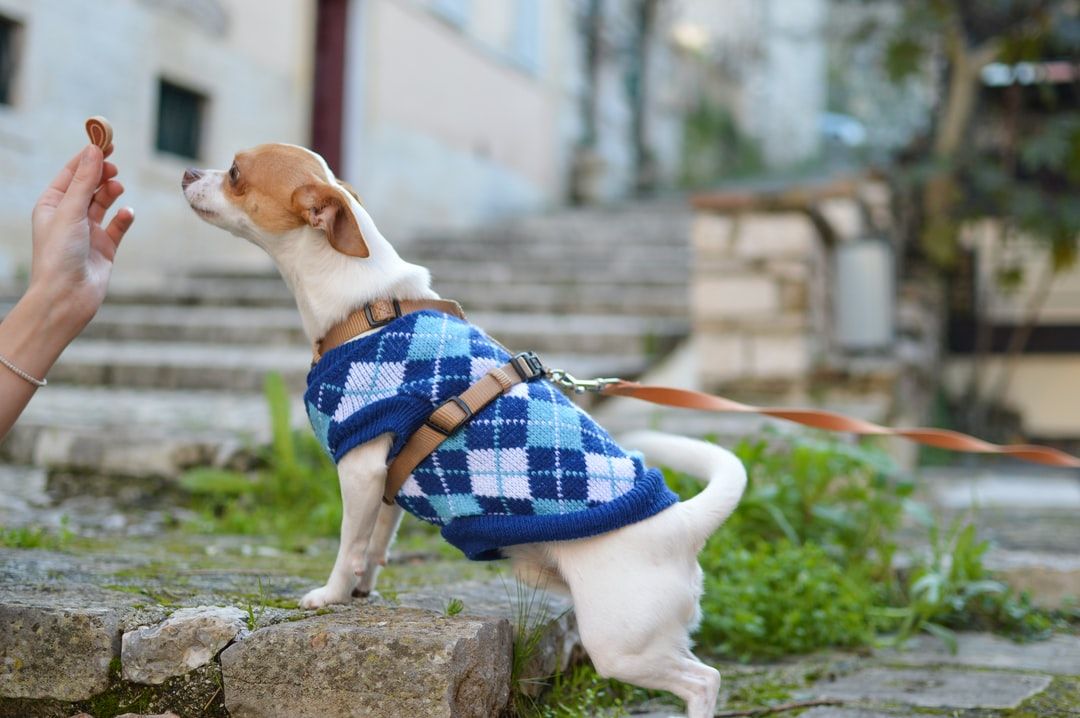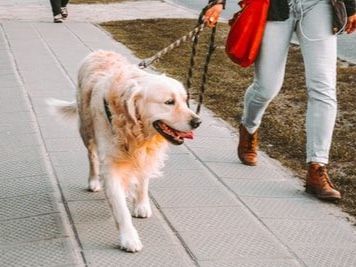Operant Conditioning covers learning from consequence. In this type of learning the dog learns by making changes in the environment based on what they do, it’s the result of the changes they make.
Operant behaviour literally means that a behaviour can be modified by its consequences.
Consequences can be reinforcing or inhibiting, which is why B. F Skinner’s quadrants are so popular in learning theory and why educated dog trainers spend so much time looking at them.
Consequences can be reinforcing or inhibiting, which is why B. F Skinner’s quadrants are so popular in learning theory and why educated dog trainers spend so much time looking at them.
But what do they mean?

Teaching Through Operant Conditioning
The way that any animal (including humans) learns cannot be disputed. With classical conditioning we respond to the environment and with operant conditioning we affect it.
For example if your dog comes back on a walk without being called and you give them a treat, they are more likely to come back because you have added something good on their return. You have also empowered your dog because they now know that they can make choices and make something happen in their immediate environment. That is a win-win situation. This is positive reinforcement in action.
Or if your dog ran away and eventually came back and you gave them a good shake (please don’t) you would be adding something wholly unpleasant to their choice to come back. You would be using positive punishment and your dog would be even more reluctant to come back next time because last time he chose to come back you behaved so erratically, scared and disempowered him.
Then negative punishment means something good ends for example a game with you if they get too nippy and/or overexcited. And negative reinforcement means something bad ends for example that firm pushing hand on their rear end when they move into a sit position.
These are not the only learning types, and neither are they that simple, but they do work and with ethics we must be careful how we use them and with some of them whether we should at all.
Positive reinforcement is easy, we can reinforce all the good stuff then it will be repeated, it makes our dogs happy and gives them agency over their lives and choices.
But what if the dog is already doing bad stuff, what do we do then?
But what if the dog is already doing bad stuff, what do we do then?
"The problem is not to find in the structure of the observed behaviour some hint as to how it can be made to disappear but rather to build up the behaviour which is missing"
-B F Skinner Contingencies of Reinforcement.

So there it is from the horse’s mouth. If a behaviour is something we want to eradicate, we simply take our focus off it and teach something else instead via positive reinforcement. Empowering the dog, making them feel good and giving them agency over their life.
There have been so many misguided and poor behaviour modification methods used over the years (and sadly still are). The entanglement of the frankly wrong idea that dogs are striving to rule the pack, that we need to be the boss, that they should respect us blah de blah has been mixed up with the idea that we should use all four quadrants because they exist.
Dogs have suffered and still are suffering because people feel they should push them around and punish them. Yet B. F Skinner, the man who discovered the quadrants, if we take time to read and study his work tells us time and again that our humanity relies on kindness during teaching.
“We are only just beginning to understand the power of love because we are just beginning to understand the weakness of force and aggression.”
- B.F. Skinner, Walden Two
The instinctive response (and something many people still default to) is positive punishment to try to stop a behaviour. For example a dog who jumps up on greeting is shouted at and it makes them scared enough to cower. Punishment in that way is not usually effective anyway due to poor timing and delivery. Plus dogs habituate to punishment delivered that way so it supresses the behaviour but not the need to greet. It also has to get stronger and stronger to have any effect.
We then attempt to ignore the jumping up, in an attempt to stop reinforcing it. But that approach doesn’t really work because there is a gap where the jumping up behaviour was, so the dog is most likely to fill that gap with something, and he is most likely to do the thing he’s already thinking about, which of course is jumping up.
So why not instead teach an alternative from the very beginning by rewarding all four feet on the ground? Or an incompatible behaviour such as lying on the ground and positively reinforce that – it’s impossible to jump up and at the same time have your belly on the ground for a reward. So let’s choose the incompatible choice, reward it, build agency for our dog, empower them and build our bond – let’s choose positive reinforcement.
We could spend forever discussing the four quadrants and many people do. Yet when we live with a dog or teach dogs and their people to live together happily and peacefully, we only need to fully understand this one thing.
“Now that we know how positive reinforcement works, and why negative doesn’t, we can be more deliberate and hence more successful, in our cultural design. We can achieve a sort of control under which the controlled…nevertheless feel free. They are doing what they want to do, not what they are forced to do. That’s the source of the tremendous power of positive reinforcement-there’s no restraint and no revolt. By a careful design, we control not the final behavior, but the inclination to behave-the motives, the desires, the wishes. The curious thing is that in that case the question of freedom never arises.”
― B.F. Skinner, Walden Two
Start Your FREE Skill-Hub Trial Today
Commitment Free 3 Day Access
Canine Principles' Skill-Hub allows unlimited* access to ALL self-study courses, workshops & webinars.
*Requires Monthly Subscription. See Skill-Hub Subscription Page For Details.

